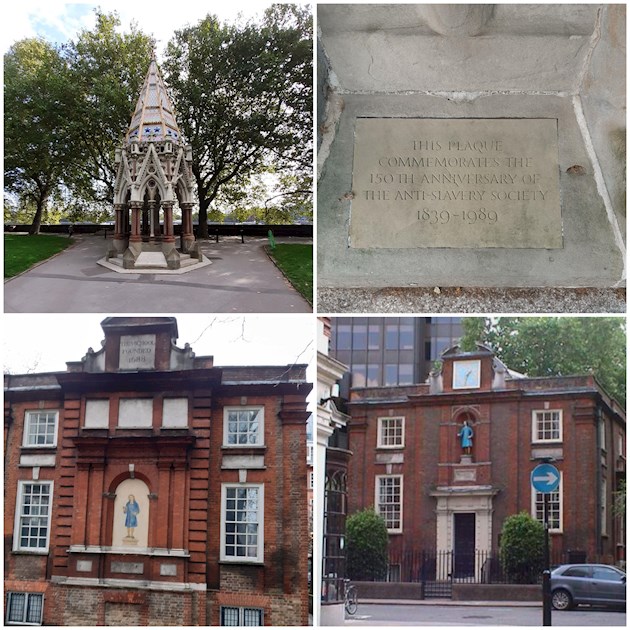Sorry if a bit boring. 🙂
Photos 1 and 2
The Buxton Memorial Fountain is a memorial and drinking fountain in London, in the park next to the Houses of Parliament, that commemorates the emancipation of slaves in the British Empire in 1834, and in particular, the role of British parliamentarians in the abolition campaign.
It was commissioned by Charles Buxton MP, and was dedicated to his father Thomas Fowell Buxton along with William Wilberforce, Thomas Clarkson, Thomas Babington Macaulay, Henry Brougham and Stephen Lushington, all of whom were involved in the abolition. It was designed by Charles Buxton, who was himself an amateur architect, in collaboration with the neo-Gothic architect Samuel Sanders Teulon (1812–1873) in 1865. It coincided with the passing of the Thirteenth Amendment to the United States Constitution, which effectively ended slavery in the United States. The memorial was completed in February 1866.
.Photos 3 and 4
An elegant townhouse of red brick, Blewcoat was built in 1709 by a London brewer to provide education for poor children, Blewcoat remained a school until 1926, and for a time served as the National Trust's main London gift shop.
HISTORYIn 1688 a charity school was established on Duck Lane, Soho, with funds raised by public subscription. Its purpose was to teach 20 poor boys from the local parishes of St John and St Margaret to read, write, learn a trade, and gain instruction in religion.
Not only were these 'charity boys' taught, they were clothed in a distinctive uniform, with a long blue coat which gave the school its name. The eye-catching colours were a matter of expedience; blue dye was the cheapest, and the stockings were soaked in saffron because it was said to repel rats who might otherwise bite the children's ankles.
The charity boys were taught alongside students who paid a fee to attend. Many went on to become apprentices, and a very select few went on to further studies at university; a rarity in the days when only the sons of the nobility could afford to attend university.
From 1714 until 1876 the school also admitted girls. In 1709 the school moved to purpose-built premises on Caxton Street, donated by the Green family of brewers. The school closed in 1926.
[

